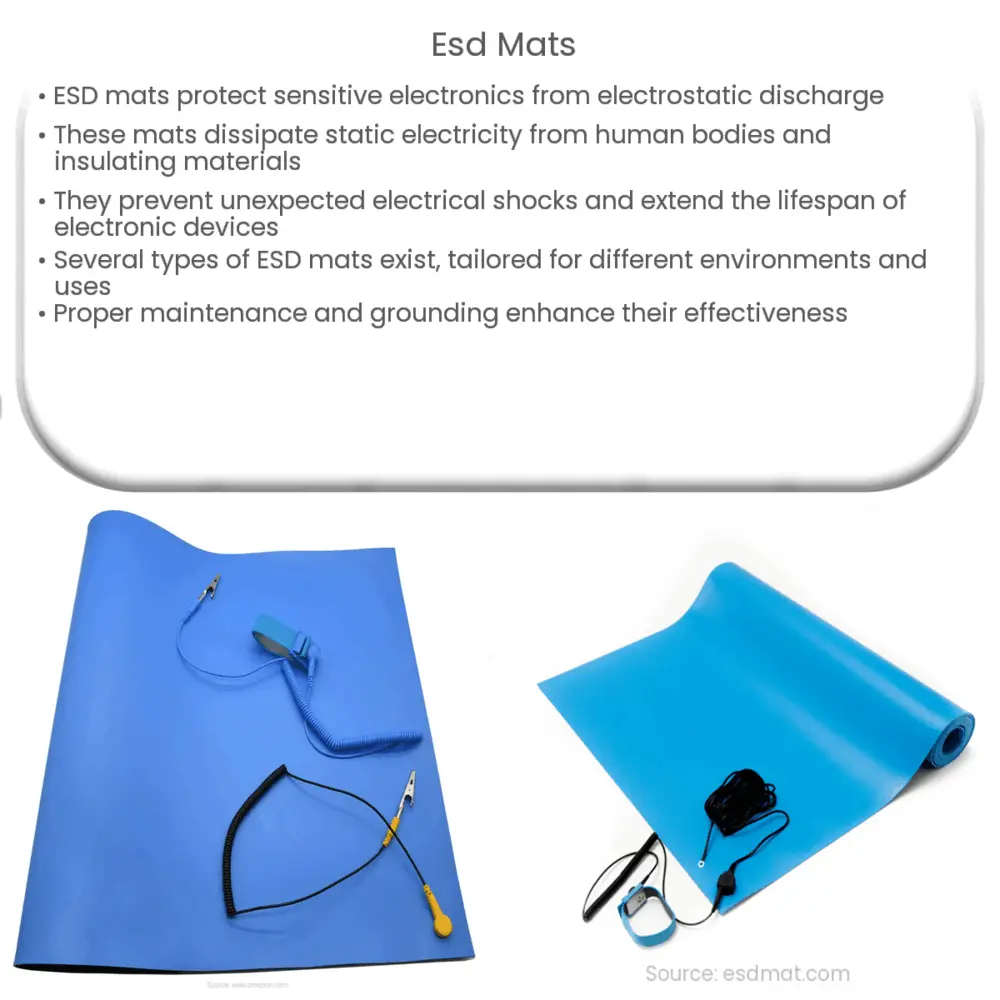Discover the importance of ESD mats in protecting sensitive electronics from static damage, including types, selection tips, and maintenance.

Understanding ESD Mats
ESD mats, also known as anti-static mats, are a critical component in safeguarding sensitive electronic equipment from electrostatic discharge (ESD). They are commonly used in industrial settings, technology labs, computer offices, and even in home-based electronic repair setups. This article will delve into what ESD mats are, their importance, types, and some crucial factors to consider when choosing the best one for your needs.
What are ESD Mats?
ESD mats are designed to prevent damage to sensitive equipment by dissipating the static electricity that can build up on the human body or other insulating materials. These mats can be laid out on work surfaces or on the floor to create a safe environment for electronic devices. They can be especially helpful in preventing unexpected electrical shocks that could potentially harm both the equipment and the person handling it.
Importance of ESD Mats
Static electricity can be surprisingly damaging to electronic devices. Even a relatively small electrostatic discharge can fry circuits, rendering your expensive equipment useless. That’s where ESD mats come into play. They ensure that static electricity is safely directed away from your sensitive electronics, therefore reducing the likelihood of ESD-related damage.
- Protective measure: ESD mats are a key preventive measure in many industries. They safeguard sensitive components from ESD, which can cause irreversible damage.
- Enhancing lifespan: By minimizing the risk of ESD damage, these mats can help enhance the lifespan of your electronic devices.
- Safe working environment: ESD mats also protect individuals from potential static shocks, creating a safer working environment.
Types of ESD Mats
There are several types of ESD mats available, each with different properties suitable for various environments and uses.
- ESD Table Mats: These mats are designed to cover workbenches or other surfaces where electronics are handled. They are typically made from a combination of static-dissipative materials and durable synthetic rubber.
- ESD Floor Mats: As the name suggests, these mats are meant for flooring. They help to dissipate static charges from people walking around, preventing the charge from being transferred to sensitive electronic devices.
- ESD Anti-fatigue Mats: These are designed to provide comfort to workers standing for long periods while still providing the benefits of ESD protection.
The choice between these types depends on the specific needs of the user, taking into account factors like the work environment, type of electronic devices handled, and the level of ESD protection required.
Factors to Consider When Choosing ESD Mats
Choosing the right ESD mat is crucial to ensure the protection of your electronic equipment. Here are some factors to consider:
- Size: Ensure the mat fits your work surface or floor area properly. Oversized or undersized mats might not provide effective protection.
- Material: ESD mats are typically made from rubber, vinyl, or foam. Each material has different properties and the choice depends on the application.
- ESD properties: The mat should have an anti-static layer and a conductive layer to dissipate the static electricity.
- Durability: Depending on the workplace environment, the mat should be resistant to heat, chemicals, and physical wear and tear.
- Comfort: If workers are standing for extended periods, anti-fatigue ESD mats are a good option.
Maintenance of ESD Mats
Proper maintenance of ESD mats is crucial for them to function effectively over time. This can include regular cleaning with recommended solutions, regular inspection for wear and tear, and replacing old mats when they have served their lifespan.
In addition, all ESD mats should be grounded properly. Grounding provides a path for the static charge to flow to the earth, hence reducing the risk of static buildup on the mat itself.
Conclusion
ESD mats are an essential tool in any environment that involves handling or operation of electronic devices. They not only protect sensitive electronic components from damaging electrostatic discharges, but also promote a safer work environment by preventing harmful static shocks. While there are multiple types of ESD mats available, choosing the right one involves careful consideration of factors like size, material, and durability. Proper maintenance and grounding of these mats is crucial to ensure their effectiveness over time. By understanding these aspects, one can make an informed choice and create a safe and efficient workspace that minimizes the risk of ESD damage.

